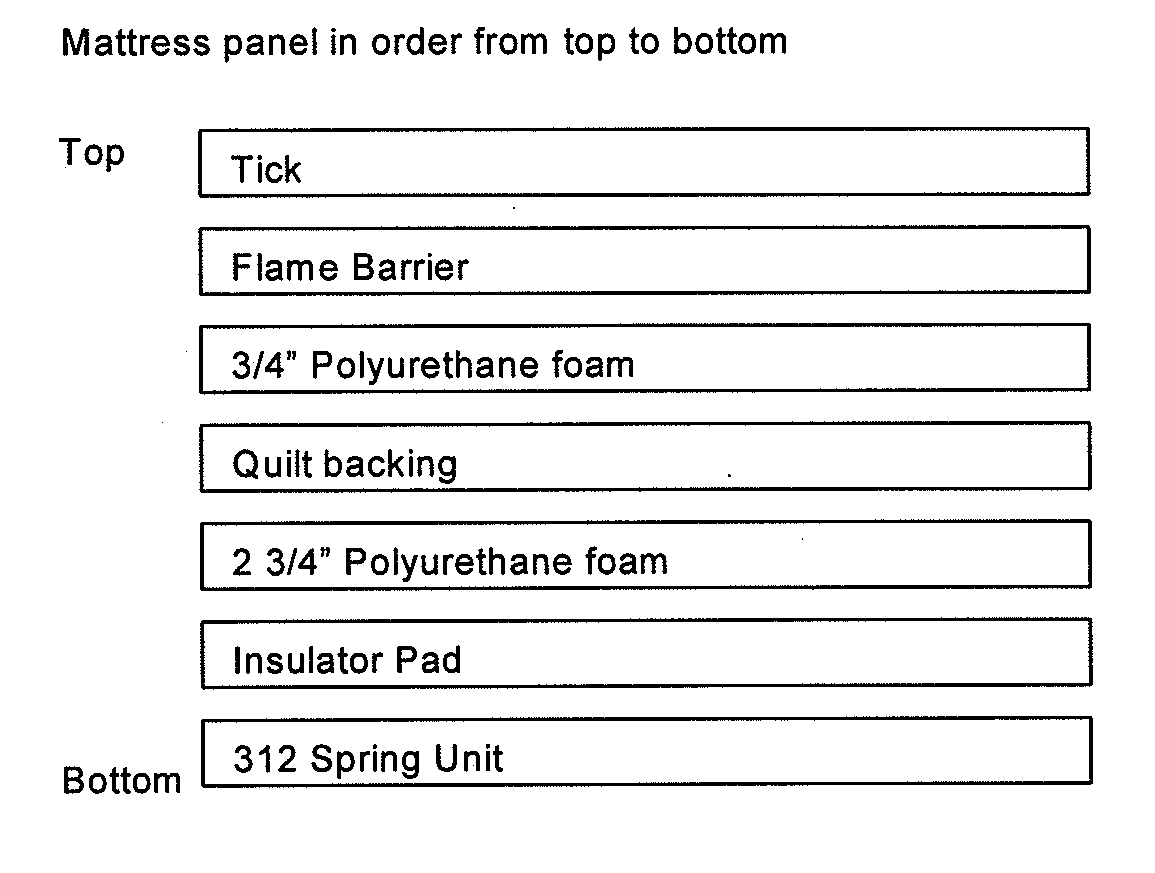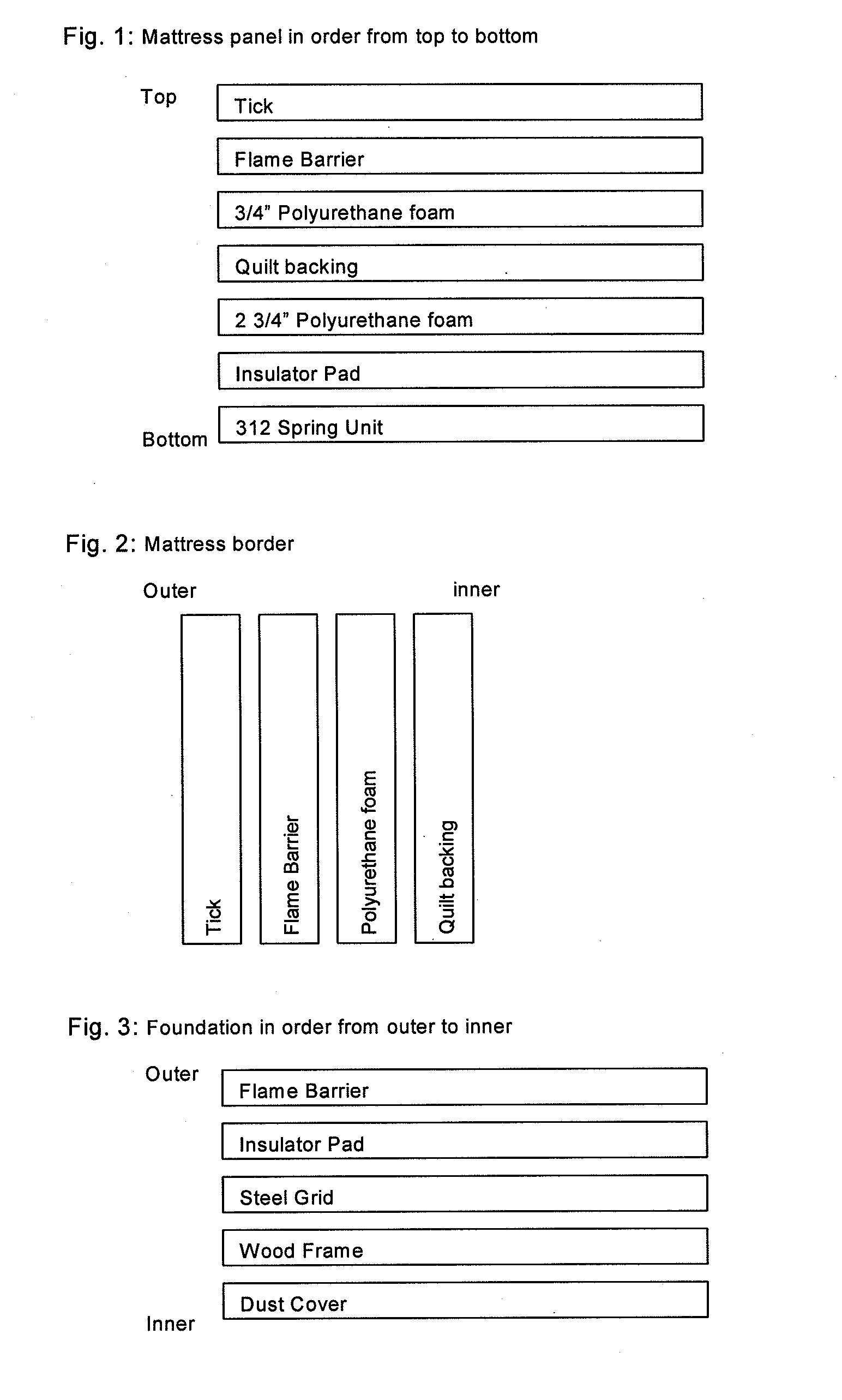Flame-retardant lyocell fibers and use thereof in flame barriers
a technology of lyocell fibers and flame-retardant fibers, which is applied in the manufacture of flame-retardant filaments, socks, weaving, etc., can solve the problems of small yield of silica in the final fiber, the compound may migrate out of the flame barrier, and the flame-retardant effect is not good, so as to achieve excellent flame-retardant properties
- Summary
- Abstract
- Description
- Claims
- Application Information
AI Technical Summary
Problems solved by technology
Method used
Image
Examples
examples 1 to 2
[0035]Kaolin (Miragloss 90, from BASF) was added to a dope of sulfite pulp in aqueous N-Methylmorpholine-N-oxide in certain amounts being sufficient to give a resulting amount of 15 resp. 30% (w / w) in the fiber. This dope was spun into 3,3 dtex fibers according to the well-known dry-jet-wet spinning method. The textile mechanical properties of the resulting fibers are shown in Table 1.
TABLE 1Additivecontent %TenacityElongationExampleFiber typeAdditive(w / w)cond. cN / texcond. %1LyocellKaolin1522.211.32LyocellKaolin3018.813.33LyocellAluminum1525.910.1hydroxide4LyocellAluminum3017.914.1hydroxide5LyocellCalcium1519.110.3carbonate6LyocellCalcium3015.613.0carbonate7ViscoseKaolin2313.715.48ViscoseKaolin408.016.9
[0036]The examples clearly show that the mechanical properties of the fibers decrease with increasing content of the incorporated inorganic additives. But even with 30% of incorporated inorganic additives they are sufficient for the use in flame barriers for mattresses and upholstered...
PUM
| Property | Measurement | Unit |
|---|---|---|
| thickness | aaaaa | aaaaa |
| flammability | aaaaa | aaaaa |
| heat resistant integrity | aaaaa | aaaaa |
Abstract
Description
Claims
Application Information
 Login to view more
Login to view more - R&D Engineer
- R&D Manager
- IP Professional
- Industry Leading Data Capabilities
- Powerful AI technology
- Patent DNA Extraction
Browse by: Latest US Patents, China's latest patents, Technical Efficacy Thesaurus, Application Domain, Technology Topic.
© 2024 PatSnap. All rights reserved.Legal|Privacy policy|Modern Slavery Act Transparency Statement|Sitemap


